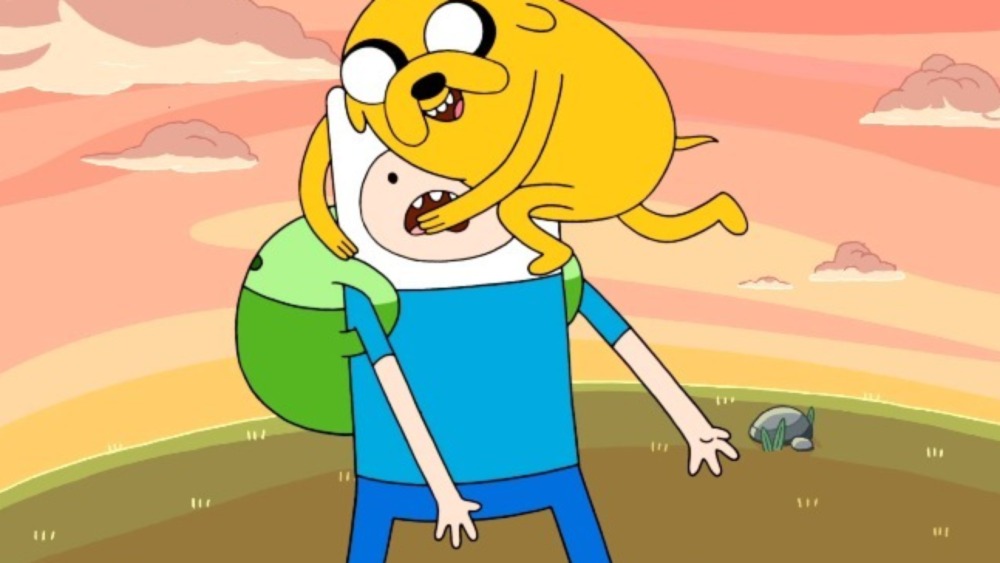
Finn and Jake live in the post-apocalyptic Land of Ooo. The first series, Adventure Time (2010–2018), follows the adventures of Finn (voiced by Jeremy Shada), a human boy, and his best friend and adoptive brother Jake ( John DiMaggio), a dog with magical powers to change shape and grow and shrink at will. But why not this one? In ending with “Wizard City,” Distant Lands denies the opportunity for thematic closure called for in Adventure Time’s finale, and resists even the definitive goodbyes of its parallel, post-finale miniseries, Steven Universe Future.For lists of spin-off episodes, see Adventure Time: Distant Lands and Adventure Time: Fionna and Cake.Īdventure Time is an American animated television media franchise created by Pendleton Ward for Cartoon Network. And that’s fine, not every episode of Adventure Time left me teary eyed. It’s a bit predictable, in a way the conclusion of “Together Again” was not. There’s a mystery-several-that Pep and Cadebra have to solve, with twists and turns that would spoil the episode. What these characters get up to is less exciting than their reveals, however. By filling “Wizard City” with these unspoken details, Distant Lands feels a step ahead compared to the representation seen in The Owl House and She-Ra, even if the latter two sport headline-grabbing relationships. This is queer living, not just queer moments. We see characters coded in all sorts of ways wearing uniforms with pants or shorts or skirts. Pep and Cadebra, while gendered differently, still share a dorm room. Blaine and all the other students express themselves like kids do. If you’ve been around younger zoomers, you would know why. Voiced by Bex Taylor-Klaus, this is never really explored. Take Spader’s close friend/accomplice Blaine, a one-eyed non-human with a middle part that sometimes wears a skirt, is sometimes called a boy, and is other times addressed with they/them.


Gender in Adventure Time was always propitious, and “Wizard City” recognizes something that is both generative and captures the sentiment of kids the age of its characters. The two adventurers don’t return here, though “Wizard City” sets the clock back several decades. It extends the themes of the series’ finale, and seeing Finn and Jake on their great time adventure was a truly heartwarming goodbye.
#ADVENTURE TIME PILOT AV SERIES#
The third entry to Distant Lands, “Together Again,” stands alone as an altogether more retrospective series looking back on Adventure Time and the characters we met. The episode felt like a love letter from the show’s writers, who were at odds with the more conservative Cartoon Network of the early 2010s. Meanwhile, “Obsidian” explicitly reckons with Marceline and Bubblegum’s romantic relationship in a deserved payoff for fans. When BMO navigates an interstellar space port (fighting against an allegory for Elon Musk and tech bros writ large) in the series’ first episode, its setting strongly invokes the sci-fi futures of Rick & Morty. Distant Lands adopts the solid colors, bolder lines, and rounder bodies of contemporary animation for an altogether cleaner look.

The show often played with the medium on a level beyond narrative as well. While Adventure Time ended as a contemporary to these shows, its start cemented the groundwork for everything from queer representation to zany speculative fiction in mainstream animation.Īdventure Time’s bold art style touted a gestalt of colored geometry coming together to form iconic characters and lush landscapes, giving it a distinct appearance among its cohorts. Rick & Morty and Steven Universe-itself spawned from series writer Rebecca Sugar-emerged during the series’ run and concluded around the same time, each drastically altering what fans expected. Western animation is now firmly in a period defined in posterity to Adventure Time. Some of the decisions, from which stories were chosen to art direction, feel like responses to changes in the medium. Each installment has been presented non-linearly, with gaps in chronology large and small.

Only one character appears in as many as three of the four episodes, a side character whose appearances amount to cameos. And the connections between these different specials remain about as apparent as an episode of graybles. Its subtle changes to the show’s distinctive art style are more apparent in this finale. But Distant Lands departs from Adventure Time in several notable ways.


 0 kommentar(er)
0 kommentar(er)
